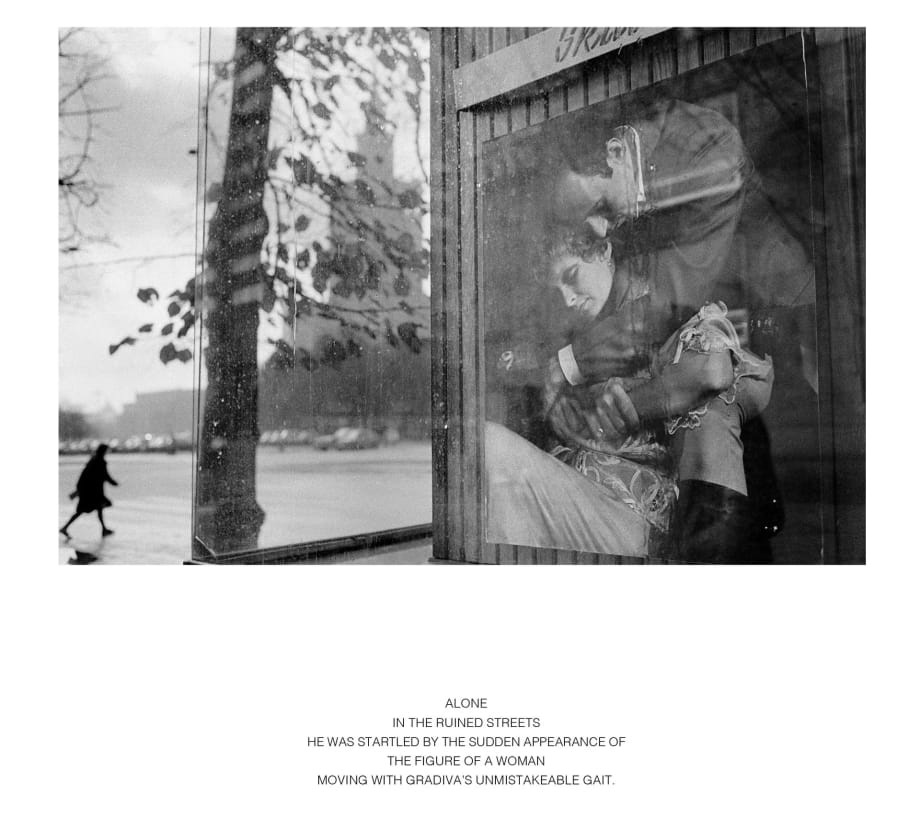Around the corner was Victor Burgin’s Gradiva (1982), a series of seven captioned photographs that reimagine Wilhelm Jensen’s 1902 novella of the same name, famously analysed by Sigmund Freud. The work primarily featured in the exhibition as an emblem of the longstanding dialogue between Burgin, Mulvey and Wollen; likewise the presentation of Mary Kelly’s Primapara: Bathing Series (1974), twelve photographs depicting the body of the artist’s infant son in fragmenting proximity, closely linked to her landmark work, Post-Partum Document (1973–79). In the context of the assorted film props and documents, though, Burgin’s photographs took on an added resonance. Gradiva is, after all, a story of archive fever, of the impossible dream of defeating time by rematerializing the past. In Jensen’s novella, an archaeologist becomes obsessed with a woman he sees represented in a Roman bas-relief sculpture and goes to Pompeii in search of her. There, he believes he finds her, alive. It falls to this woman to explain that he has misrecognized her, that she is not from the ancient past but is familiar from a time much nearer yet nonetheless gone, his childhood.

